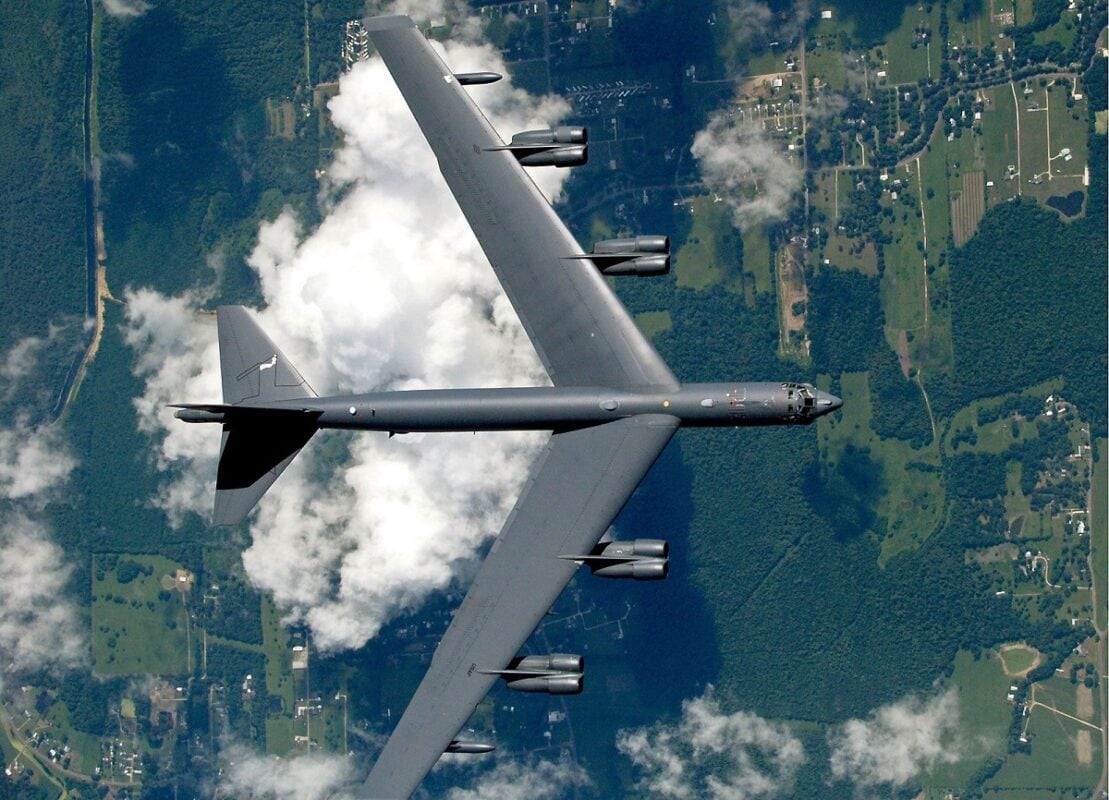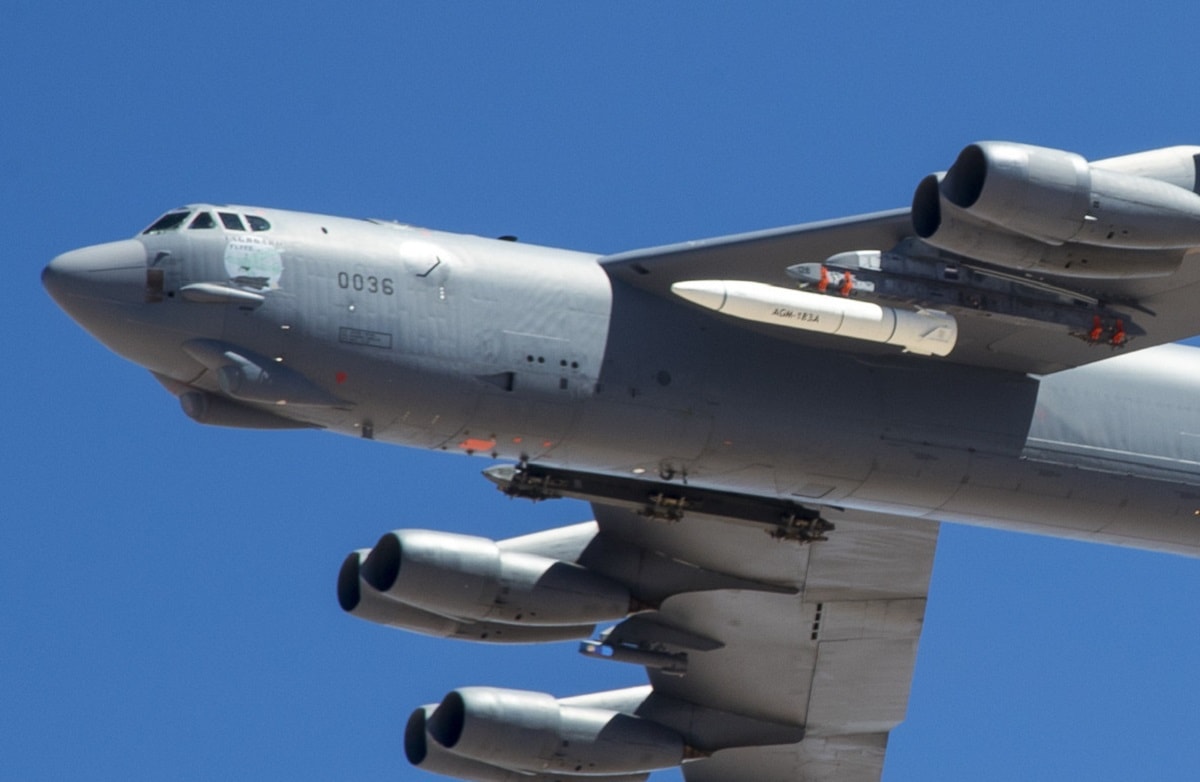The B-52 Stratofortress, the oldest strategic bomber in the U.S. military, is set to receive a new designation as part of a structural and technological update.
New Engines and Radar
According to Colonel Louis Ruscetta, the senior materiel leader of the B-52’s modernization program, the venerable strategic comber will be redesignated to either “B-52J” or “B-52K” once it receives the planned new engines and radar.
The Air Force has still to make a final determination about the new designation, which is set to mark the most significant modification in the history of the strategic bomber.
In September 2021, the Air Force awarded Rolls-Royce a $2.6 billion contract to replace the B-52H Stratofortress’ TF33 engines, which were designed and built starting in the 1960s, with new F130 engines. This structural update would allow the strategic bomber to fly well into the 2050s.
Col. Ruscetta shared the Air Force’s plans for the B-52 Stratofortress during the Air Force Materiel Command’s Life Cycle Industry Days conference in Dayton, Ohio, last month.
Moreover, during the conference, Ruscetta suggested that the Air Force is looking to install fighter jet-quality radar to the B-52 Stratofortress in order to better integrate with the rest of the fleet (U.S. and coalition) and support air-to-ground operations.
According to the Air Force, the new radar will give the B-52 Stratofortress better sensory capabilities and the ability to scan farther into the airspace, thus increasing the bomber’s situational awareness, a key requirement on the 21st-century battlefield.
Furthermore, the new radar will give the B-52 Stratofortress crew the ability to guide weapons in flight. This highlights the shift toward stand-off munitions that can be deployed from hundreds of miles away, thus increasing the survivability of the aircraft. The Air Force hasn’t announced which radar system will be replacing the current 1960s-era radar of the B-52H Stratofortress.
Ruscetta said that the Air Force and U.S. Global Strike Command need to look at how they define the new variant, with a decision likely to be coming sometime by 2024 and before the new engines get installed on the B-52 Stratofortress fleet.
But modernizing a fleet of around 50 strategic bombers is no easy job and requires some serious planning to pull off safely. The Air Force can’t lose the better part of its strategic bomber fleet all at once, so the Air Force must find a way to start modernizing the B-52 Stratofortress fleet without affecting operations.
Flying the B-52 Stratofortress Into the Future
An aircraft that first flew 70 years ago, the B-52H Stratofortress continues to be a staple of the U.S. Air Force’s strategic bomber fleet. Alongside the B-1 Lancer and B-2 Spirit, the B-52H Stratofortress makes up the Air Force’s air component of the nuclear deterrence triad.
Only recently, the Pentagon deployed the B-52H Stratofortress over Europe and the Middle East to respectively respond to Russian and Iranian aggression.

Image: Creative Commons.
But despite its 70 years of age, the B-52 Stratofortress is set to fly well into the future. Indeed, the Air Force plans to retire the B-1 Lancer and B-2 Spirit and continue forward with a combination of the B-52 Stratofortresses and B-21 Raiders for its future strategic bomber fleet. (The B-21 Raider is the fifth-generation stealth strategic bomber in development right now; it is set to conduct its first operational flight later in the year.)
Expert Biography: A 19FortyFive Defense and National Security Columnist, Stavros Atlamazoglou is a seasoned defense journalist specializing in special operations, a Hellenic Army veteran (national service with the 575th Marine Battalion and Army HQ), and a Johns Hopkins University graduate. His work has been featured in Business Insider, Sandboxx, and SOFREP.

